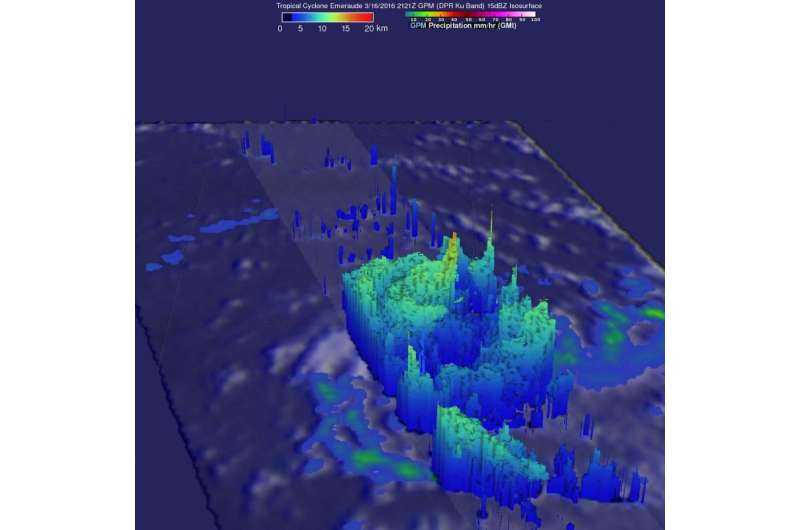NASA sees heavy rain in Tropical Cyclone Emeraude

Heavy rainfall was occurring Tropical Cyclone Emeraude when the Global Precipitation Measurement or GPM passed over the Southern Indian Ocean and measured the rainfall rate.
Tropical Cyclone Emeraude formed on March 15, 2016 from a tropical low pressure area and intensified rapidly. By March 16 it was a tropical storm and a hurricane on March 17.
The GPM core observatory satellite flew above intensifying Emeraude on March 16, 2016 at 2121Z 5:21 p.m. EDT) after the tropical cyclone's maximum sustained winds had increased to greater than 90 knots (103.5 mph). At that time GPM's Dual-Frequency Precipitation Radar (DPR) instrument measured rainfall just northwest of Emeraude's eye falling at a rate of over 209 mm (8.2 inches) per hour. The powerful thunderstorms producing this extreme rainfall were measured by GPM's radar (DPR) reaching an altitude above 15.7 km (9.7 miles).
Emeraude continued to intensify after GPM passed overhead, with maximum sustained winds peaking on March 17 at 0900 UTC (5 a.m. EST) at 125 knots. Emeraude then started a weakening trend.
By March 18 at 0900 UTC (5 a.m. EDT), Tropical Cyclone Emeraude's maximum sustained winds had dropped to 85 knots (97.8 mph/157.4 kph). It was centered near 10.1 degrees south latitude and 84.5 degrees east longitude, about 734 nautical miles (844.7 miles/1,359 km) east-southeast of Diego Garcia and far from any land areas. Emeraude was moving to the east at 3 knots (3.4 mph/5.5 kph).
Emeraude is expected to re-intensify as it curves toward the southwest continuing over open waters of the Southern Indian Ocean.
Provided by NASA's Goddard Space Flight Center




















